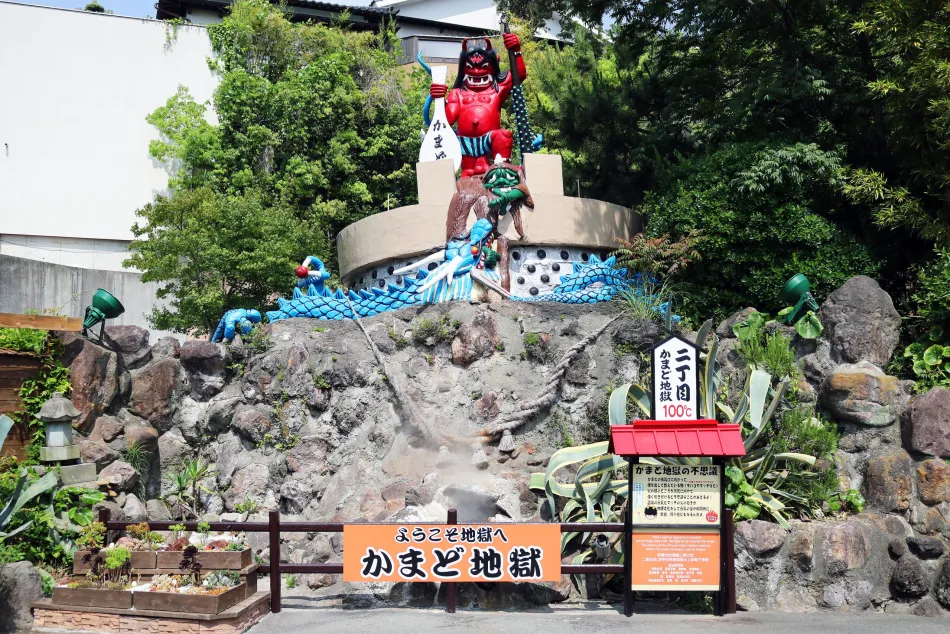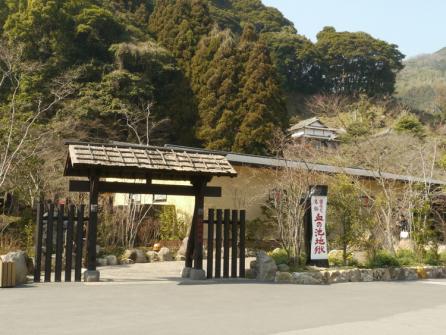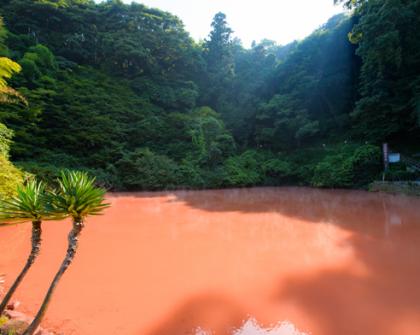OITA
The Hell of the Hole


Kamado Jigoku is one of the most visited hells in Beppu, Oita Prefecture, which is the largest hot spring in Japan. The fumaroles have a temperature of 98°C. The name “Kamado Jigoku” comes from the fact that since ancient times, people used to cook rice offerings in the fumaroles for the great festival of Hachiman Kamato-jinja Shrine, the local deity.
Pond of Blood Hell


This is the oldest natural hell in Japan, “Blood Pond Hell,” described as “Akayu Spring” in the Bungo Fudoki. The boiling hot mud is so hot that even the steam from the jets is tinged red.
The Hell of the Sea


The mysterious and cool kobato blue pond looks like the ocean when you stare at it, but it actually has a spring temperature of 98 degrees. This “Umi-Jigoku” was created by the explosion of Tsurumidake 1,200 years ago. According to the “Bungo Fudoki,” it corresponds to the “Kubari no Yu” (hot spring of Kubari).
In 2009, this area was designated as a national place of scenic beauty along with Tatsumaki Jigoku, Kamino-ike Jigoku, and Shiraike Jigoku.
Yufudake


Yufudake, which rises 1,583 meters above sea level in the northeastern part of Yufuin, is popularly known as “Bungo Fuji” because of its beautiful and majestic appearance with twin-ear peaks.
Its name became well known throughout Japan after its frequent appearances in the 2005 NHK television series “Kaze no Haruka” (Haruka the Wind).
Kuju Yume Suspension Bridge


A panoramic view at an elevation of 777 meters.
The Kokonoe “Dream” Suspension Bridge in Kokonoe Town is 173 meters high and 390 meters long, making it the tallest suspension bridge in Japan for pedestrian use only.
The view from the bridge is spectacular, offering views of “Shindo Falls,” one of the top 100 waterfalls in Japan, and “Kukenkei,” famous for its fresh greenery and autumn foliage. The bridge is especially popular as a new spot for viewing the autumn leaves in early November, when it is at its best, attracting many tourists.
Jioukenkei


The Kusu River and Naruko River valleys are beautiful.
Among them, “Gyukenkei” is especially known as a valley with beautiful scenery of fresh green leaves, autumn leaves, and waterfalls.
The cliffs continue for about 2 km on both sides of the Kusu River basin, and virgin forests of fir, tsuga, and katsura trees are spreading out. Because of the series of hairpin curves, it is also known as “Jusan-kagari,” or “Thirteen Curves.
The area is also famous for its autumn foliage, which is at its best in early November, when it is crowded with many tourists. In addition to the observatory on the pass, the view can also be seen from the Kokonoe “Dream” Suspension Bridge, the largest suspension bridge in Japan.
